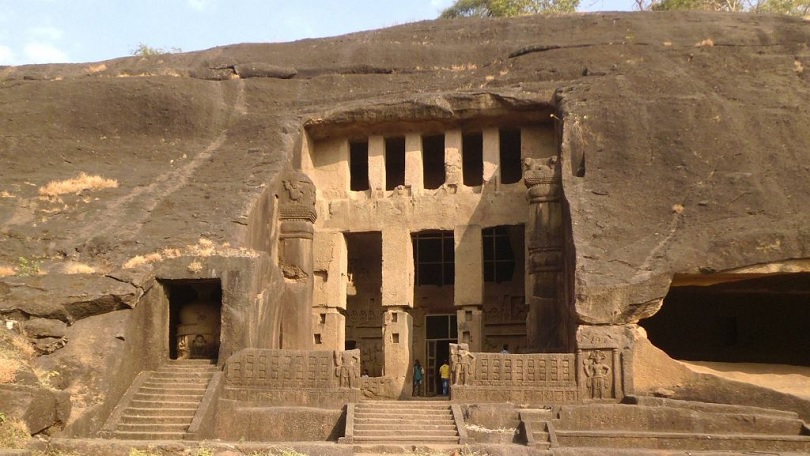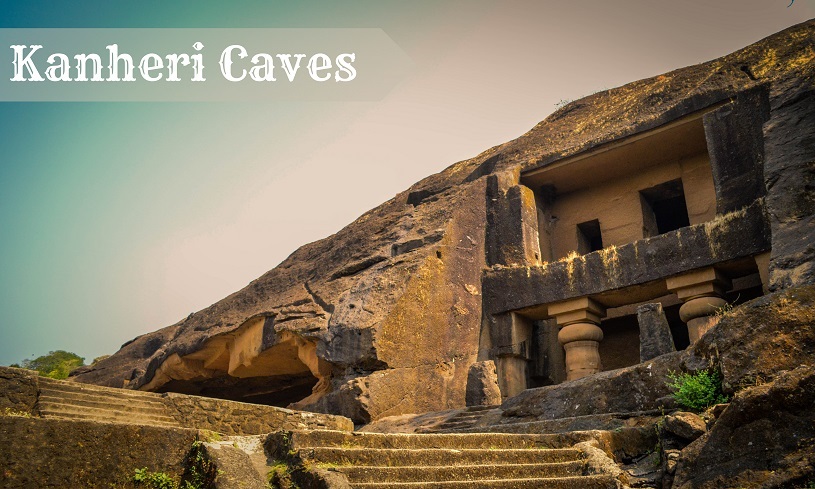Mumbai, often called the City Of Dreams, is ever-bustling and full of life. Sprawling skyscrapers, architecturally superior buildings, ever-busy roads and jam-packed trains mark this city, and it is truly a unique experience to witness it. While the residents, as well as the people visiting the city, tend to love the activity within it, everyone needs a break once in a while to sit back, get back to nature and just relax. You may think that a busy city like Mumbai might not have many such peaceful spots, but that is not entirely the case. This city has not just one but numerous locations that help you unwind, explore the history and even add adventure to your break.
Kanheri Caves is one such destination right in the heart of Mumbai, a haven for adventure enthusiasts and nature lovers alike. Nestled amidst the lush greenery of Sanjay Gandhi National Park, Kanheri Caves are carved out of gigantic basaltic rocks and are one of the oldest cave temples in India. A total of 109 caves and rock-cut monuments make up this site; these caves are accessible through the rock-cut steps. It is believed that Kanheri Caves were built between the 1st century BC and 10th century AD, a similar timeline as one of Ajanta Caves’ and they served as essential centres of learning and education for Buddhist Monks. The name of the caves was coined after the Sanskrit term ‘Krishnagiri’, which translates to black mountains.
Kanheri Caves Timings: 7:30 AM to 5:00 PM (Sometimes closed between 12:30 PM to 2:00 PM)
Kanheri Caves Ticket Price: INR 15/- (Indians) & INR 200/- (Foreigners)
Location: Sanjay Gandhi National Park, Borivali East, Mumbai, Maharashtra
Here are a few details you need to know as you set out to explore the beauty, adventure and history behind these ancient caves.
Kanheri Caves: History

First excavated in 1894 by British archaeologist James Burgess, Kanheri Caves are a culmination of 109 monuments which are adorned with ancient scriptures, sculptures, carvings and paintings. It is believed that first cave here is as old as 1st century BC. The interiors of the caves are reflective of the belief that Buddhist monks used them to live, study, meditate and worship.
The presence of large stupas in the congregation halls in these caves are indicative of them being an integral Buddhist site and therefore, Kanheri were associated with the profileration of Buddhsim religion in this area.
Also Read: 7 Must Visit Museums of Mumbai
Kanheri Caves: Architectures And Attractions

The architecture of the Kanheri Caves is a mix of Buddhist and Hindu styles. Interestingly, the rock-cut caves, which date back to the 1st century BCE are all made out of the same bedrock. Each of the 109 caves features varying sizes and degrees of intricacy. The design of the caves is simple yet elegant, with several chaitya halls, viharas, and stupa chambers, each adorned with intricate carvings and sculptures of Buddha and other deities.
The complex also includes a massive water management system consisting of tanks, cisterns, and channels, which demonstrates the advanced engineering knowledge of the ancient builders.
Some of the best attractions at these caves include:
Cave 1: A Buddhist monastery also called a vihara, Cave 1 has two entrance pillars, and it is divided into 2 levels. It also has an incomplete prayer hall known as achaityagriha .
Cave 2: This cave is home to three stupas with Buddhist sculptures around them.
Cave 3: Adorned with a large Buddhist statue at the entrance, stupas and a large screen that separates the cave from the courtyard, Cave 3 or Chaitya, is one of the most important monuments in Kanheri Caves.
Cave 4,5 and 6: The latter two caves are water tanks, while Cave 4 is believed to be the oldest cave here.
Cave 34: Cave 34 has incomplete Buddha paintings on its ceilings.
Cave 41 and Cave 67: These caves feature carved images of Bodhisattvas, with cave 41 also offering you a glimpse of the Jataka tales. These caves have sculptures of Avalokiteshvara, the eleven-headed Bodhisattvas.
Cave 90: Home to more than 100 Buddha statues in distinct poses, Cave 90 is one of the oldest and the darkest of the lot.
Take a trip to these ancient Kanheri Caves to learn more about the history of our civilisation as well as indulge in fun and adventurous activities.


